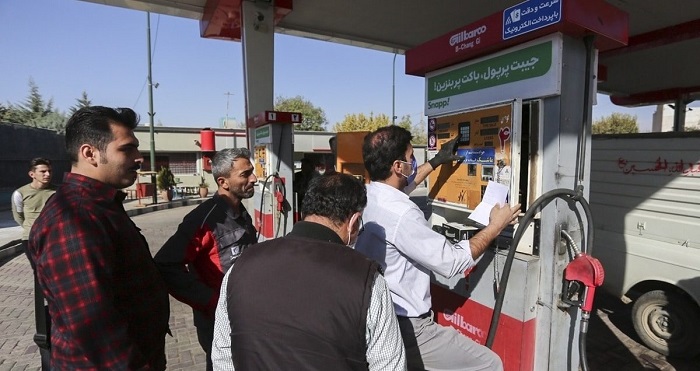
Security entities have resorted to intimidating tactics, sending text messages to the public, warning them of “legal consequences” if they don’t disperse from protest gatherings.
Gasoline pricing has been a hotly debated topic in Iranian media and government circles recently. Proposals related to card usage, subsidies, and rationing have been presented and subsequently denied. State officials frequently justify price hikes with reasons ranging from battling smuggling to addressing complex technical factors.
Ali Akbar Nejadali, CEO of the National Oil Products Distribution Company, tried to allay rumors about the closure of fuel stations and potential price surges. He asserted that the Ministry of Oil is mandated to enhance gasoline and oil distribution nationwide while combating fuel smuggling.
#Iran News in Brief
On Thursday night, Aug 10, extended queues emerged in front of fuel stations in various cities throughout Iran due to fuel scarcity. The #IRGC-run Javan newspaper acknowledged today that the extensive line at a gas station providing diesel #fuel along the… pic.twitter.com/sY1b9jofS5— NCRI-FAC (@iran_policy) August 11, 2023
Meanwhile, Mostafa Reza Hosseini Qotbabad, a parliamentarian, disclosed the government’s intentions behind the gasoline price adjustments. He likened recent policy shifts to experiments, implying that the government is testing the waters for a potential price increase.
The government’s stance on the matter remains opaque. Interior Minister Ahmad Vahidi dismissed reports about a price hike as baseless rumors in July, while media outlets persistently focus on gasoline production and consumption disparities.
Solidarity and cooperation are the essential elements for sustaining the uprising. It is a patriotic duty to support the families of martyrs, attend to the wounded, and assist the resistance units in any form and to any extent possible #IranProtests pic.twitter.com/HhwpaACKtg
— Maryam Rajavi (@Maryam_Rajavi) December 24, 2019
The media’s emphasis could be aimed at mitigating social shock in case the Raisi government decides on a gasoline price increase. Past experiences, such as the November 2019 abrupt gasoline price tripling under Hassan Rouhani’s government, triggered significant social unrest. That decision led to large-scale protests, arson, and violent suppression that resulted in the death of at least 1,500 protesters.
While collective responsibility for the 2019 price decision was claimed by all branches of government, blame was soon shifted among various factions. The Kayhan newspaper suggested Rouhani intentionally incited societal reactions through the price hike for political leverage.
Iranian cities and villages are grappling with thirst amidst scorching summer. Water scarcity now reaches Tabriz and Mashhad, due to the policies of the mullahs, who drain public wealth into water-intensive nuclear projects and regional proxies, exacerbating the crisis.#Iran pic.twitter.com/phdgSYQnEJ
— Maryam Rajavi (@Maryam_Rajavi) August 16, 2023
Facing this dilemma, the regime grapples with financial challenges on one side and the threat of social unrest on the other. The international isolation resulting from its extremist policies has dwindled its budget, hampering its efforts to fund key projects crucial for its survival, like nuclear and missile programs.
These financial strains come at a time when the Iranian government, replete with officials sanctioned internationally, is desperate to maintain its stronghold. For a nation that has faced 44 years of political and economic oppression, the looming question is whether it will withstand another economic jolt or witness a significant upheaval.

MEK Iran (follow us on Twitter and Facebook), Maryam Rajavi’s on her site, Twitter & Facebook, NCRI (Twitter & Facebook), and People’s Mojahedin Organization of Iran – MEK IRAN – YouTu







